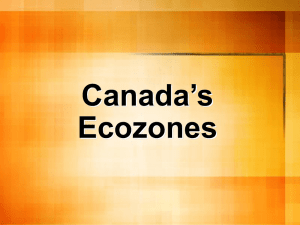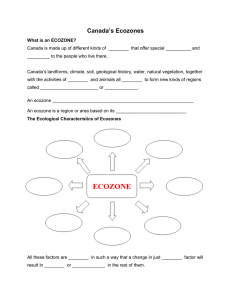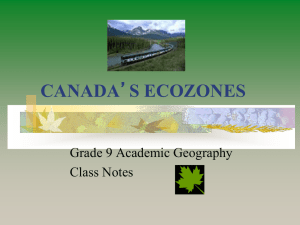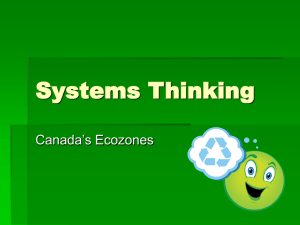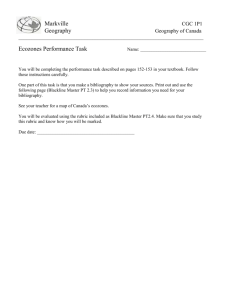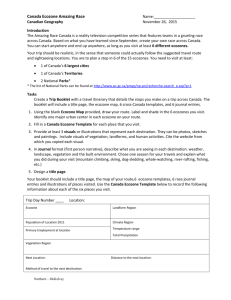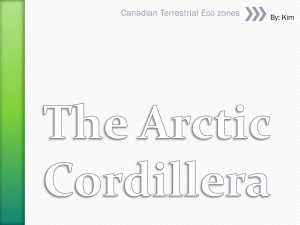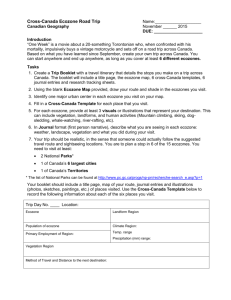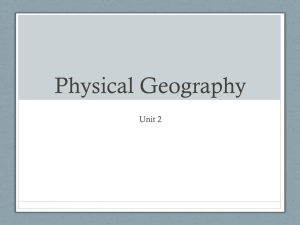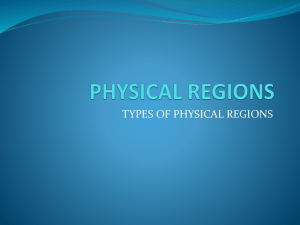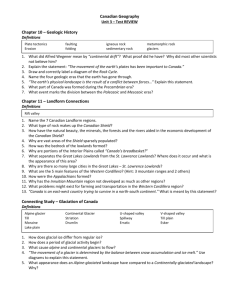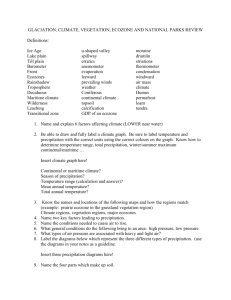Grade 9 Geography: Ecozones Connections Handout
advertisement
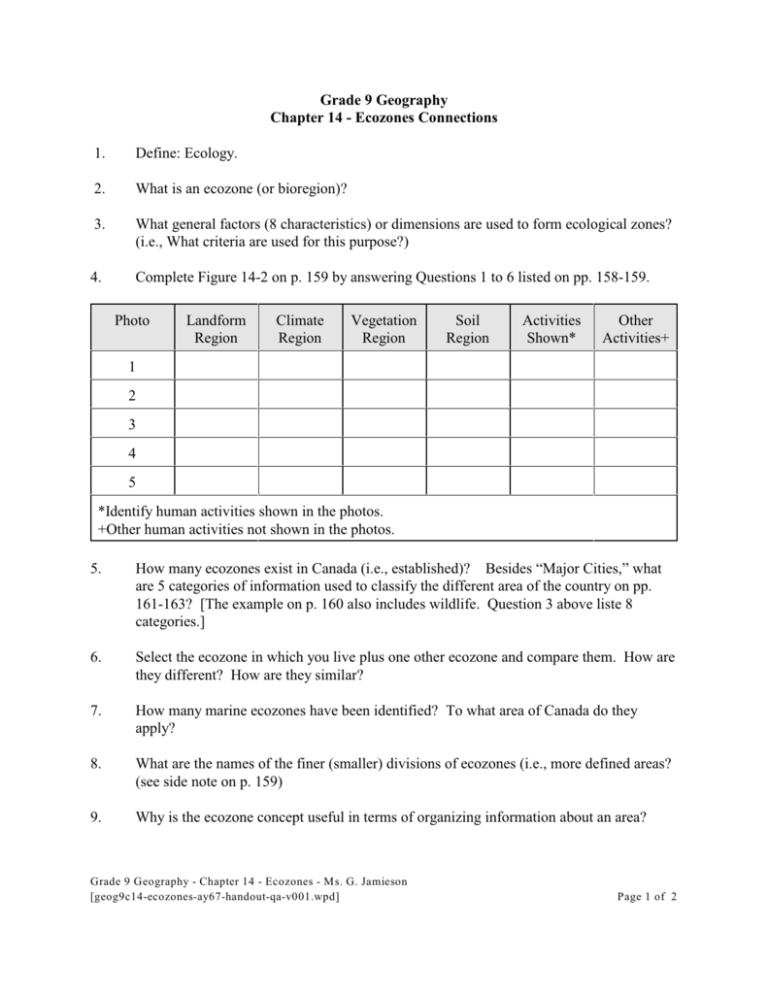
Grade 9 Geography Chapter 14 - Ecozones Connections 1. Define: Ecology. 2. What is an ecozone (or bioregion)? 3. What general factors (8 characteristics) or dimensions are used to form ecological zones? (i.e., What criteria are used for this purpose?) 4. Complete Figure 14-2 on p. 159 by answering Questions 1 to 6 listed on pp. 158-159. Photo Landform Region Climate Region Vegetation Region Soil Region Activities Shown* Other Activities+ 1 2 3 4 5 *Identify human activities shown in the photos. +Other human activities not shown in the photos. 5. How many ecozones exist in Canada (i.e., established)? Besides “Major Cities,” what are 5 categories of information used to classify the different area of the country on pp. 161-163? [The example on p. 160 also includes wildlife. Question 3 above liste 8 categories.] 6. Select the ecozone in which you live plus one other ecozone and compare them. How are they different? How are they similar? 7. How many marine ecozones have been identified? To what area of Canada do they apply? 8. What are the names of the finer (smaller) divisions of ecozones (i.e., more defined areas? (see side note on p. 159) 9. Why is the ecozone concept useful in terms of organizing information about an area? Grade 9 Geography - Chapter 14 - Ecozones - Ms. G. Jamieson [geog9c14-ecozones-ay67-handout-qa-v001.wpd] Page 1 of 2 10. Define: GDP as it applies to ecozones. 11. Define: Growing season. 12. Ecozones allow you to combine and relate information relevant to a specific region of the country. The nature of ecozones are constantly changing. Can you think of what the future will be like for a specific ecozone, based on the nature of the environment today? 13. Name each of the 15 ecozones. Locate each one on a map of Canada. 14. Create a line graph of the 15 ecozones using GDP and Area as the two series (characteristics) included in the graph. Label the graph properly (i.e., title, labels for X and Y axes, legend). What relationship do you see between GDP and Area? 15. Repeat Question 15 using GDP and Population. 16. Draw a bar graph (do not use 3D) of the 15 ecozones for each of the following topics. Include a legend providing the full names of the ecozones, but along the X-axis, use the first letter of the word in the name of the ecozone (e.g., Taiga Shield would be shown as TS). Include all appropriate titles and information. Rank order the ecozones from the lowest to the highest for each of the topics. After you complete each bar chart, analyze what you see. What can you conclude about each chart? (a) (b) (c) (d) (e) (f) Population GDP Maximum number of days in growing season Minimum level of precipitation Population density Area Grade 9 Geography - Chapter 14 - Ecozones - Ms. G. Jamieson [geog9c14-ecozones-ay67-handout-qa-v001.wpd] Page 2 of 2
